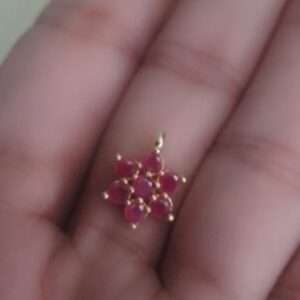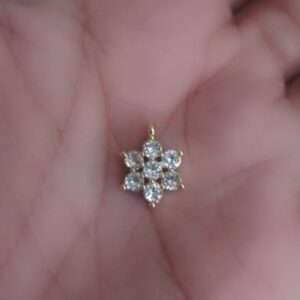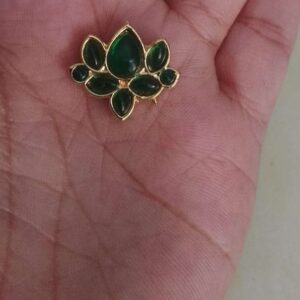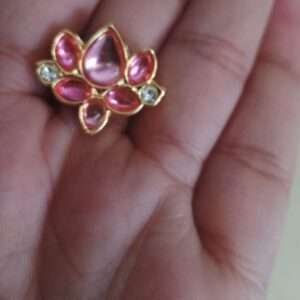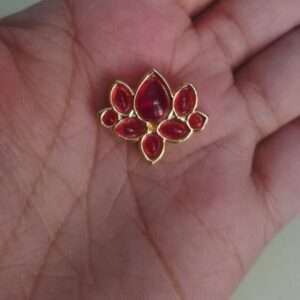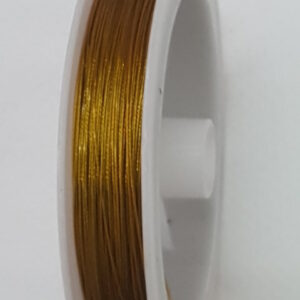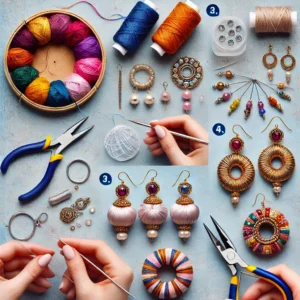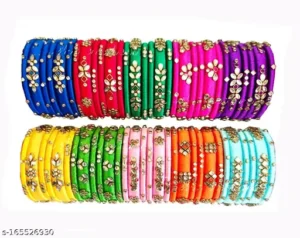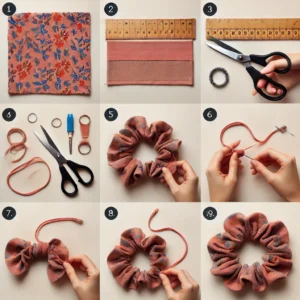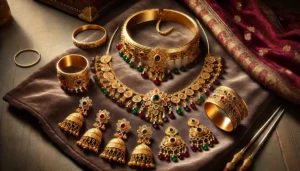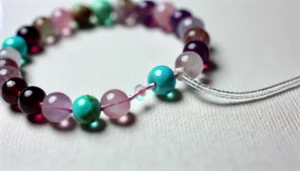Home » Posts tagged 'Slow Fashion'
Tag Archives: Slow Fashion
Discover the unexpected comeback of ancient beadwork and beaded jewelry traditions that are turning heads!
Uncover how ancient beadwork and beaded jewelry traditions are making a vibrant comeback. Learn why these intricate pieces are capturing modern fashion.
Beadwork and beaded jewelry are experiencing a surprising resurgence, with contemporary fashion circles embracing this ancient art form in unexpected ways. Once relegated to traditional attire and cultural events, beadwork is now making bold statements on global runways and modern accessories. This vibrant craft is not just about decoration; it is a reflection of cultural heritage, artistic expression, and sustainable fashion. The revival of beaded jewelry aligns with a broader trend of returning to handcrafted, unique items that tell a story beyond the mass-produced world of fast fashion.
The History and Cultural Significance of Beadwork
Beadwork and beaded jewelry have deep historical roots, tracing back thousands of years across various cultures, from African tribes to Native American communities, and even ancient Egyptian societies. Each bead, whether made from bone, shell, glass, or gemstone, carried meaning and purpose, representing status, spirituality, or cultural identity. Beadwork was not only an artistic endeavor but also a societal marker.
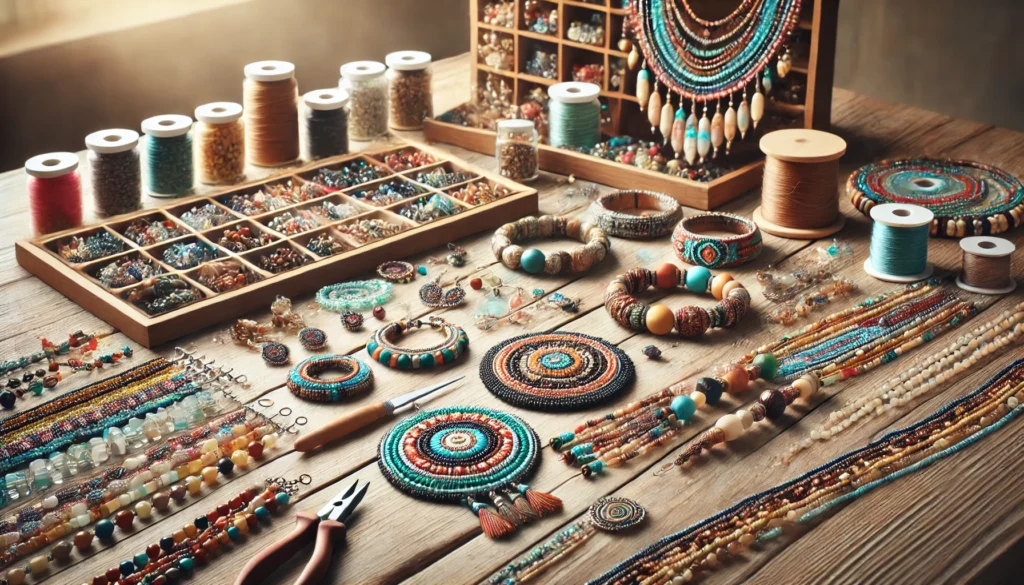
According to historians, beadwork served as a medium of communication and expression, with patterns and colors holding specific meanings. Beadwork expert Carol Wilcox noted that beads have been considered “an essential part of human expression, similar to language or music.” Today, modern artisans are reviving these ancient practices, infusing them with contemporary designs to appeal to today’s fashion enthusiasts.
Beadwork as a Modern Fashion Statement
In recent years, beaded jewelry has evolved beyond its traditional boundaries, finding a place in modern fashion as a statement piece. This transformation has been fueled by a growing appreciation for slow fashion—an approach that values craftsmanship, sustainability, and individuality. Fashion influencers and celebrities have embraced beaded jewelry for its versatility and unique aesthetic, often opting for custom-made pieces that reflect personal style.
The modern resurgence can also be attributed to a desire for more meaningful and ethical fashion choices. Unlike machine-made accessories, each beaded piece requires hours of meticulous handwork, making every piece unique. A recent fashion analyst noted that “the labor-intensive nature of beadwork aligns perfectly with current trends that favor authenticity and artisanal quality over mass-produced uniformity.”
Craftsmanship Meets Innovation: New Trends in Beaded Jewelry
The revival of beadwork is not just about re-creating traditional patterns but also about innovation and new trends. Artisans are experimenting with unconventional materials like recycled glass, sustainable beads, and even 3D-printed beads. The fusion of traditional techniques with modern technology is giving rise to fresh, innovative designs that cater to a broader market.
For example, mixed-media beadwork that combines metal, fabric, and traditional beads is becoming increasingly popular. This trend adds a contemporary twist to the classic beadwork, making it more appealing to younger consumers. Fashion expert Janet Wong observed that “by blending the old with the new, artisans are redefining what beadwork can be, ensuring it stays relevant in an ever-changing fashion landscape.”
The Future of Beadwork in the Global Market
Industry experts believe that beadwork is on track to secure a permanent place in the global market, particularly as consumers become more conscious of sustainability and the stories behind their purchases. The craft’s adaptability to modern tastes, coupled with its rich cultural heritage, gives it a unique edge.
Moreover, with the rise of online marketplaces like Etsy and Amazon Handmade, artisans from around the world now have a platform to showcase their unique creations to a global audience. As a result, there has been an increase in demand for authentic, handcrafted beaded jewelry, which not only supports local artisans but also promotes cultural heritage.
Jewelry designer Alicia Miller stated, “The value of beadwork lies not just in its beauty, but in its ability to connect the wearer to a rich tapestry of history and culture.” With the right balance of innovation and tradition, the future of beadwork appears bright and promising.
A Craft that Transcends Time
The resurgence of beadwork and beaded jewelry is more than just a fashion trend—it is a movement towards embracing heritage, sustainability, and craftsmanship in a modern context. As artisans continue to innovate while preserving ancient techniques, beadwork is set to remain a vibrant and cherished part of the global fashion scene.
Why handmade accessories are the next big thing in fashion – and you won’t believe the impact!
Explore how handmade accessories are transforming fashion with unique designs and sustainable practices. Learn why they are the ultimate style statement.
Handmade accessories are taking the fashion world by storm, offering a fresh alternative to mass-produced items that dominate the market. These one-of-a-kind pieces—ranging from hairpins and headbands to anklets and brooches—provide a personalized touch that is becoming increasingly rare in today’s fashion landscape. As more consumers seek unique ways to express themselves, the demand for handcrafted accessories continues to grow, underscoring a broader movement toward individuality, quality, and sustainable fashion choices.
The Rise of Handmade Accessories in Modern Fashion
Handmade accessories have become a symbol of authenticity and originality in a fashion market flooded with uniformity. Unlike factory-made items, these accessories are crafted with meticulous attention to detail and infused with the artist’s creative spirit. Each piece tells a story, making it more than just an accessory but a wearable piece of art. Fashion historian Linda Larson explained that “handmade accessories connect the wearer with the creator’s vision, offering a sense of connection that mass-produced items simply cannot replicate.”
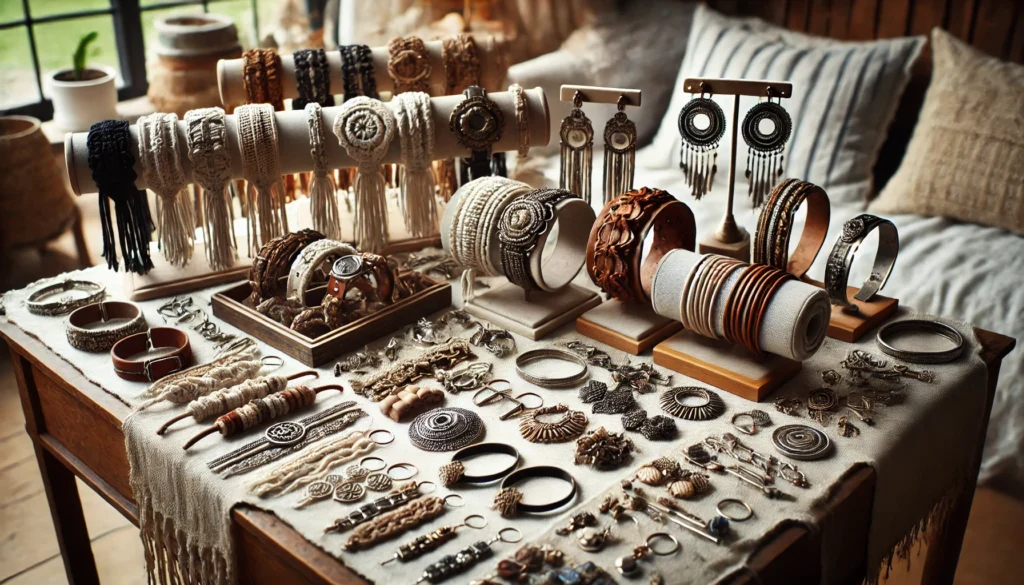
The rise in popularity of handmade accessories also reflects a growing rejection of fast fashion’s ethical and environmental implications. With consumers becoming more aware of the impact of their choices, there is a clear shift towards slow fashion, which values craftsmanship, sustainability, and ethical production. Artisanal brands and independent designers are leading this change, creating accessories that are both stylish and sustainable.
Why Consumers Are Flocking to Handmade Accessories
The appeal of handmade accessories lies in their uniqueness and the ability to customize them according to personal preferences. Many artisans offer bespoke services, allowing customers to choose specific colors, materials, and designs, resulting in a product that perfectly matches their style. This level of personalization is rarely found in mass-produced goods and is a key reason why handmade accessories are becoming more popular.
Additionally, handmade accessories often feature high-quality, durable materials. Unlike their cheaper, mass-produced counterparts, which are prone to wear and tear, handmade items are built to last. Many artisans use sustainable and ethically sourced materials, such as recycled metals, natural fabrics, or even upcycled components. This commitment to quality and sustainability adds to the allure of handmade accessories.
Craftsmanship and Artistry: The Essence of Handmade Accessories
At the heart of handmade accessories is the dedication and skill of the artisans who create them. Each piece requires hours, sometimes even days, of labor-intensive work. The artistry involved is what sets handmade accessories apart from their mass-produced counterparts. Jewelry designer Samira Thompson noted that “the time and skill invested in handmade accessories give them a soul—a story that the wearer carries with them.”
The market for handmade accessories includes a wide range of items, such as macramé earrings, crochet hairbands, leather cuffs, and metal brooches. Each accessory type reflects different craft techniques and materials, showcasing the rich diversity of artisanal work. As a result, handmade accessories appeal to a broad spectrum of consumers, from those who prefer minimalist styles to those seeking bold, statement pieces.
The Market Potential for Handmade Accessories
Experts believe that the market for handmade accessories will continue to grow as consumers increasingly prioritize sustainability, quality, and individuality. The rise of e-commerce platforms and social media has also provided artisans with greater visibility and access to global markets. Sites like Etsy, Instagram, and Pinterest have become crucial tools for artisans to showcase their work, connect with customers, and build their brands.
According to fashion marketing strategist Julia Reed, “the appeal of handmade accessories is more than just their aesthetic value. It’s about owning something that’s truly yours—an item that no one else has. This unique selling point is what makes handmade accessories a promising niche in the fashion industry.”
The Future of Fashion is Handmade
The trend toward handmade accessories signals a shift in consumer values, from quantity to quality and from conformity to individuality. As more people seek meaningful, sustainable, and unique fashion choices, handmade accessories are poised to become a staple in modern wardrobes. This growing demand will likely lead to more innovation and diversity in designs, ensuring that the future of fashion remains vibrant, sustainable, and deeply personal.
How embroidery and thread art are redefining jewelry – the stunning transformation you need to see!
Explore how embroidery and thread art are being reimagined in jewelry design, combining tradition with innovation. Discover this evolving trend now.
Embroidery and thread art are experiencing a renaissance in the world of jewelry design, where traditional needlework techniques are being reimagined to create intricate and elegant accessories. From embroidered pendants to thread-wrapped earrings and intricate Aari-work bracelets, these handmade pieces blend the timeless charm of needle and thread with contemporary fashion sensibilities. As fashion trends lean towards authenticity, sustainability, and personalization, embroidery and thread art jewelry are becoming a favorite among those seeking unique and meaningful adornments.
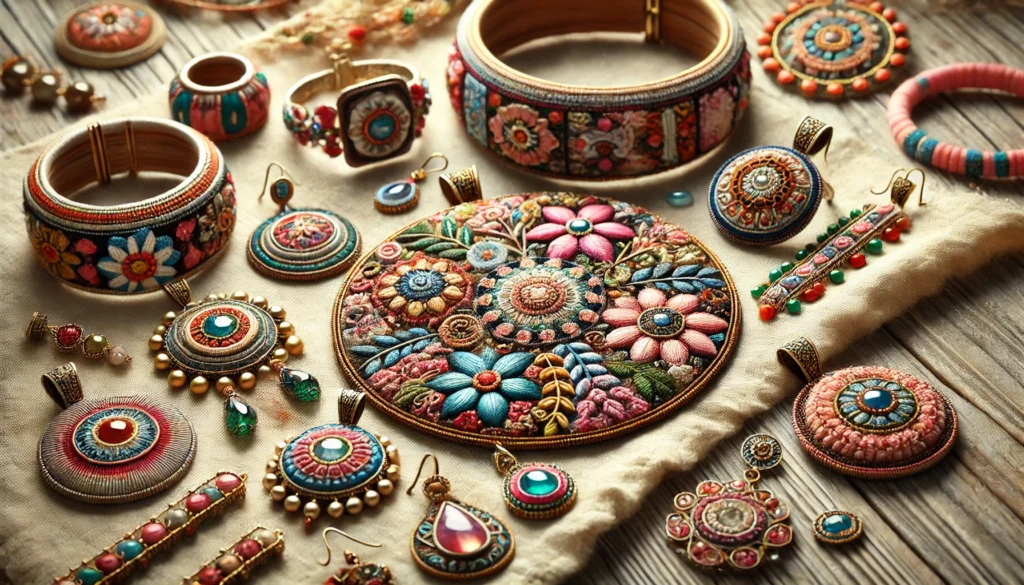
The Resurgence of Embroidery and Thread Art in Jewelry
Historically, embroidery has been a part of textile embellishment for centuries, with different styles and techniques emerging across various cultures. However, incorporating these intricate designs into jewelry is a more recent phenomenon that has caught the eye of modern fashion designers and enthusiasts. The shift is driven by a growing appreciation for handcraftsmanship, sustainable practices, and the desire for accessories that tell a story. Art historian Megan Searle emphasized that “embroidery and thread art are more than just decorative crafts; they are a means of storytelling, reflecting cultural heritage and personal narratives.”
As consumers move away from mass-produced items, the demand for handmade, embroidered jewelry has surged. These pieces often feature a blend of traditional techniques such as zardozi, Kantha, or Aari work, with modern designs that cater to contemporary tastes. The result is a range of unique jewelry that is both rich in heritage and aligned with current fashion trends.
How Embroidery and Thread Art Jewelry is Made
Creating embroidery and thread art jewelry involves a detailed and labor-intensive process. Artisans use various stitches, from the simple backstitch to the more intricate bullion knot, to form patterns and motifs on fabric bases. These embroidered pieces are then incorporated into jewelry settings such as metal frames for pendants or earrings. Thread-wrapped bangles and rings are another popular style, where colorful threads are meticulously wrapped around a base to create vibrant, textured jewelry.
A unique aspect of embroidered jewelry is its versatility. Designers can use different materials—such as silk, cotton, or metallic threads—and incorporate beads, sequins, and gemstones to add depth and dimension. Fashion designer Rachel Tan remarked that “the beauty of embroidery lies in its adaptability; it can be as minimalist or as extravagant as one desires.”
The Growing Popularity of Embroidered Jewelry
The appeal of embroidery and thread art jewelry lies in its ability to blend traditional craftsmanship with modern design sensibilities. Many consumers are drawn to these pieces because they represent a fusion of history and innovation. Each piece of embroidered jewelry is one-of-a-kind, reflecting the artist’s skill and creativity. This uniqueness is particularly appealing in a market saturated with generic accessories.
Moreover, embroidered jewelry often aligns with the principles of slow fashion. It takes time, skill, and patience to produce each piece, which contrasts sharply with the mass production typical of the fast fashion industry. Consumers who value sustainability and ethical production practices are increasingly choosing embroidered jewelry for this reason. Jewelry market analyst Karen Zhao noted that “handcrafted embroidery in jewelry is a powerful statement against the disposable nature of modern fashion.”
The Future of Embroidery in Jewelry Design
Experts believe that embroidery and thread art will continue to thrive in jewelry design, especially as the trend toward personalized and meaningful fashion grows stronger. The craft’s adaptability allows it to evolve with changing fashion trends, ensuring its relevance in the future. Additionally, as more designers and consumers recognize the value of handcrafted, sustainable accessories, embroidered jewelry is poised to occupy a significant space in the fashion market.
Fashion trend analyst Isabella King highlighted that “embroidered jewelry is not just a trend but a testament to the timeless elegance of needlework. It bridges the gap between the past and the present, making it a versatile choice for fashion-forward consumers.”
A Timeless Craft with a Modern Twist
Embroidery and thread art have successfully transcended their traditional roots to become a significant trend in jewelry design. By combining age-old techniques with contemporary styles, artisans are crafting pieces that are as unique as they are meaningful. As the fashion industry continues to embrace sustainability and authenticity, embroidery and thread art jewelry will likely remain a cherished choice for those who appreciate the beauty of handmade craftsmanship.
Macramé is back! Discover how ancient knotting techniques are transforming jewelry trends!
Explore the revival of macramé and knotting techniques in modern jewelry, blending ancient crafts with contemporary styles. Learn more about this trending art form.
Macramé and knotting techniques are experiencing a remarkable revival in the world of jewelry design, captivating fashion enthusiasts and artisans alike with their intricate patterns and bohemian charm. Rooted in ancient crafting traditions, these techniques involve the art of tying knots to create beautiful, textured designs that can be adapted into various jewelry pieces, from earrings and bracelets to necklaces and anklets. As fashion trends continue to embrace artisanal craftsmanship and sustainability, macramé jewelry is becoming a standout choice for those seeking unique, handmade accessories.
The Historical Significance of Macramé and Knotting in Craft
Macramé, a craft that dates back centuries, is believed to have originated with 13th-century Arab weavers who used knotting techniques to create decorative fringes on textiles. The art form spread throughout Europe, where it became popular among sailors who used it to pass the time while at sea. By the Victorian era, macramé became a fashionable home decor trend, often used to create intricate wall hangings and plant holders.
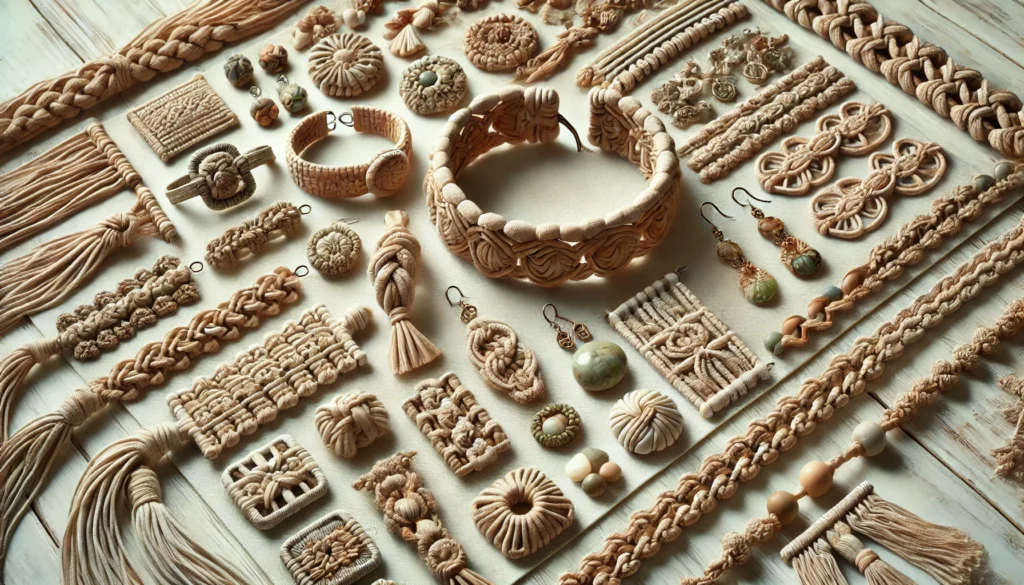
In jewelry design, macramé and other knotting techniques bring a rich history of craftsmanship to contemporary fashion. Fashion historian Mark Jensen stated that “macramé is more than just a decorative art; it’s a versatile craft that speaks to the history of human creativity.” Today, artisans are reviving these ancient techniques to create modern, stylish jewelry that appeals to a wide range of tastes.
How Macramé Jewelry is Crafted
Creating macramé jewelry involves a meticulous process that requires patience, skill, and an eye for detail. Artisans use various knotting techniques, such as the square knot, half-hitch knot, and lark’s head knot, to create intricate patterns and textures. The jewelry pieces are often made from materials like cotton, hemp, linen, or waxed cords, which provide both durability and a natural, earthy aesthetic.
Macramé jewelry can be adorned with beads, shells, or semi-precious stones to add a touch of elegance and uniqueness. The process typically begins with designing a pattern and measuring out cords of varying lengths. The artisan then carefully ties knots to create the desired design, adjusting the tension and spacing to ensure uniformity. Jewelry designer Elisa Ramos mentioned that “macramé offers a tactile experience—each knot is carefully tied, making every piece of jewelry unique and personal.”
The Growing Popularity of Macramé Jewelry in Modern Fashion
The resurgence of macramé and knotting techniques in jewelry can be attributed to several factors, including the rise of bohemian fashion, a renewed interest in handcrafted accessories, and the emphasis on sustainable, slow fashion. Unlike mass-produced jewelry, each piece of macramé jewelry is handmade, making it inherently more sustainable and environmentally friendly.
The aesthetic appeal of macramé jewelry also plays a significant role in its popularity. The textured patterns and natural materials give macramé jewelry a unique, earthy vibe that pairs well with various styles, from casual, everyday wear to more elaborate, boho-chic looks. Fashion influencer Claire Donovan noted that “macramé jewelry has a timeless appeal; it’s both rustic and refined, making it perfect for those who love to mix and match styles.”
The Future of Macramé and Knotting Techniques in Jewelry Design
Experts believe that macramé and knotting techniques will continue to thrive in the jewelry industry, especially as consumers increasingly prioritize sustainability and artisanal quality. The craft’s adaptability allows for a wide range of designs, from minimalist pieces to bold statement jewelry, ensuring its relevance in the ever-evolving fashion landscape.
Craft industry expert Julia Harmon emphasized that “macramé is more than just a trend—it’s a celebration of craftsmanship and creativity. As more people seek out unique, handmade jewelry that tells a story, macramé will continue to grow in popularity.” She added that with the rise of online platforms like Etsy and Instagram, artisans now have more opportunities to showcase their macramé jewelry to a global audience, further fueling the trend.
A Timeless Craft with Modern Appeal
Macramé and knotting techniques are proving that ancient crafts can find new life in modern jewelry design. As artisans continue to innovate and explore the possibilities of these versatile techniques, macramé jewelry will remain a popular choice for those who appreciate the beauty of handmade, sustainable accessories. With its blend of history, artistry, and contemporary style, macramé is truly a craft for the ages.
